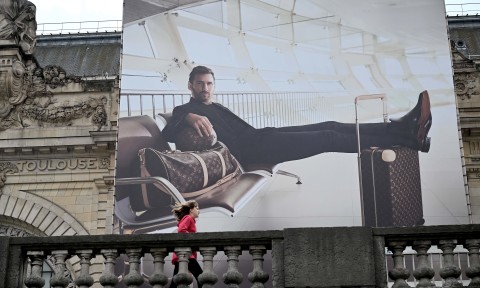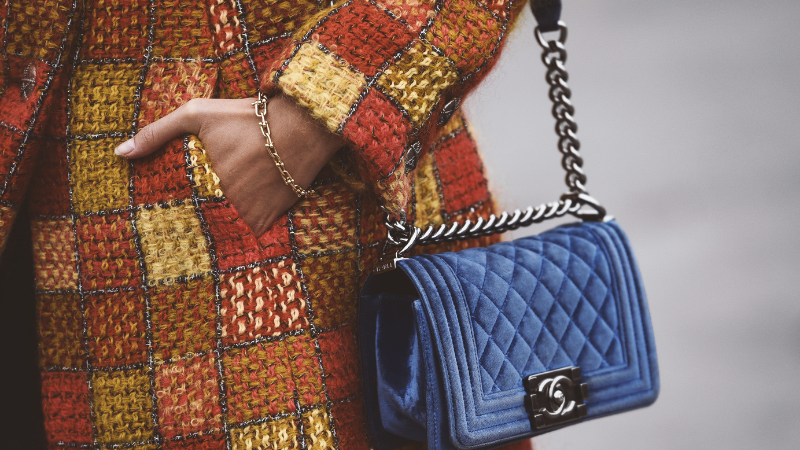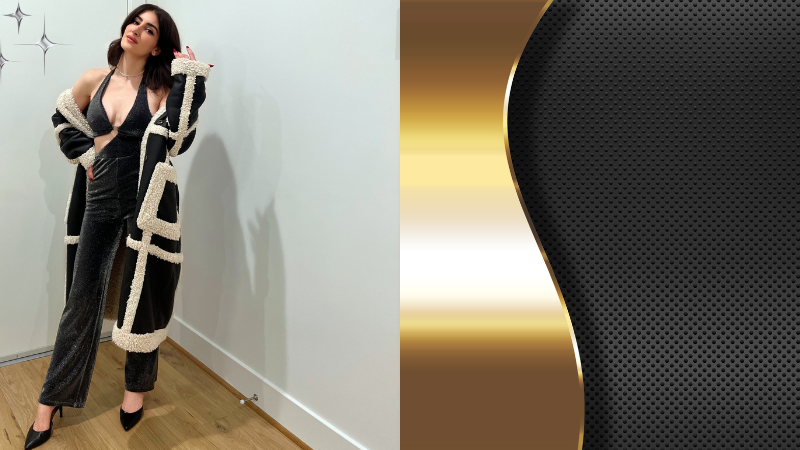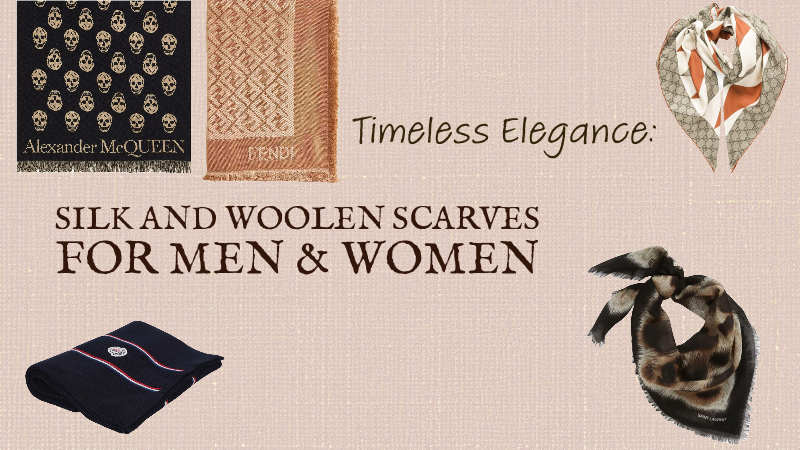FOOTBALL’S BID TO CRACK LUXURY FASHION
As more sports try to plant their flag in the world of luxury fashion, football’s recent strategy feels like the most authentic attempt yet.

Sports have long tried to understand what a lucrative and culturally significant relationship with luxury fashion looks like. Ranging from athlete style in the vein of LeBron James’s now iconic Thom Browne short suits to big marketing pushes for high-end collaborations, like Paris Saint-Germain’s Dior partnership or a $2,800 football cut from Louis Vuitton leather, each attempt has provoked varying levels of attention. But rarely do these instances of cross-pollination linger longer than a few months, prompting the question of whether there’s an alternative route that leads to something more substantial: a genuine, deep-rooted relationship between luxury fashion and sport.
Typically, sports look to the major luxury players for partnerships. LVMH’s $166 million sponsorship of the 2024 Olympics is a shining example of the financial upside to a relationship with a luxury giant. Meanwhile, in tennis, Gucci and Louis Vuitton back shining stars Jannik Sinner and Carlos Alcaraz respectively, extending the competition beyond the court. While these partnerships provide coverage in the form of ad campaigns, court presence, Instagram posts—Sinner’s personalized Gucci monogram bag has no doubt made its way to your feed in recent months—there’s something bubbling in football that feels a great deal more interesting for those of us approaching it from a fashion perspective. Buoyed by lesser-known designers and labels, football is working hard to be the sport that taps luxury fashion where it really matters.

Amongst the rising tide of damning headlines about Manchester United, several stories in recent months illustrate football’s concerted effort to platform smaller independent designers and brands.Back in April, 424’s Guillermo Andrade was named creative advisor for the MLS Cup, a role that put him in charge of League apparel and storytelling initiatives for the annual competition. Elsewhere, the United States women’s team, outfitted in Martine Rose’s pitch-perfect tailoring and bold Nike Shox mules, headlined an unprecedentedly popular Women’s World Cup. In South Africa, Thebe Magugu, winner of the 2019 LVMH Prize for Young Fashion Designers, signed on with the Orlando Pirates to design the team’s 2023/2024 kits and fan apparel. And in the Premier League, Crystal Palace became the first team in the league’s history to appoint a creative director. Fall/Winter 2023 will be Kenny Annan-Jonathan’s first collection, aiming to create “products that go beyond typical sports team merch and grow the team’s fan base.” This statement, taken from the designer’s interview with Business of Fashion, crystallizes the goal of each of these unions.

Of course, growing a team’s fan base is one of the main motivations behind these partnerships, and, to a great extent, what makes them possible from a financial perspective. Beyond the fact that the appointment opens up each of the respective designers’ fan bases to the clubs, it also fuels press. Martine Rose’s fluorescent Nike Shox mules, complete with squared toe, were never going to fly under the radar of the regular football fan, were they? Whether they were clowned or lauded, they provoked conversation in parts of the internet that a team’s uniform hasn’t reached before, putting the US women’s team firmly in the center of the competition’s news—until the head of the Spanish soccer federation Luis Rubiales disgraced himself, that is. Likewise, these crossovers introduce independent designers to an audience that would perhaps never have seen their work otherwise.While football is relatively new to the game, major companies have found ways to tap niche communities for years. Take the rise of the microinfluencer, for example. With names like Kim Kardashian reportedly charging upwards of $1.5 million per Instagram post, the logical next step for a brand is to look for cheaper options. And, it turns out, the cheaper option often yields better results. A microinfluencer is classed as an account with between 1,000 and 10,000 followers, and these smaller, tight-knit communities offer the possibility of much higher engagement for brand partnerships. I would class myself as an active football fan but I’d be lying if I said I’d ever interacted with—or heard of—the Orlando Pirates. I had, however, heard of and followed the rise of Magugu over recent years in my capacity as a style editor. With Magugu on board, I now feel in some way connected to the Pirates, albeit loosely. For context, I routinely scroll past the monotonous shots of star athletes in campaigns for brands to which they have no meaningful connection; Lionel Messi for Louis Vuitton, Emma Raducanu for Dior, Lewis Hamilton for Valentino, to name but a few. Such is the microinfluencer blueprint in practice.Beyond the possibility of mutual growth, these collaborations also result in some really nice products; products that, indeed, “go beyond typical sports team merch,” as Annan-Jonathan noted. Magugu’s work with the Orlando Pirates generated two top-level strips, each featuring tonal skull-and-crossbones imagery against black and pale-green backdrops. Similarly, when A.S. Roma called on Aries to rework its kit, the outcome was a tie-dyed masterpiece that perfectly balanced A.S. Roma’s unmistakable visual history with Aries’s modern, graphic-heavy approach. Martine Rose’s elegantly tailored, double-breasted suits with subtle monogram detailing were a cut above the average game-day tracksuit. Coupled with Rose’s viral Shox mules, the look presented a more exciting vision of how football can achieve new relevance from a style angle.

Speaking to Rose about her work with Nike and the US Women’s National Team, the mutually beneficial nature of these partnerships is laid bare. “It’s a first for Nike to do tailoring, and that in itself is really exciting and a privilege to have done,” she says. “It was a shared interest and a natural progression of the women’s football narrative. It’s more than just tailoring; it’s about the women wearing it, it’s about strength, resilience, beauty, power.”In addition to Nike extracting sartorial significance from Rose’s expertise, she gained an education. “Nike has been a vehicle for me to explore the world of women’s football and it has been a huge learning curve,” she admits. “Over the last two and a half years, since I really started studying the game, and getting under the skin of it, I have learned so much. I have seen women’s football develop a lot in the last two and a half years. It is really notable. The conversation is really in the public domain, and it never was before.”Unfortunately, to see these partnerships as an everybody-wins scenario would be to overlook the less beautiful side of the beautiful game. As an ever-growing list of veteran players makes a mass exodus to the Saudi Pro League in return for dizzying amounts of money and less competitive football, the sport’s propensity for less-than-ethical behavior is impossible to ignore. This is not a new development; in top-level football, the any money is good money mentality has reigned for decades. We only need to look back to 2019, when the forced sale of Russian oligarch Roman Abramovich’s Chelsea F.C. due to government sanctions raised questions about the procedures in place to screen investors. What’s more, research released in March showed that, in the space of three months and 100 games, Premier League clubs took 81 domestic flights with an average flight time of 42 minutes, and some as short as 27 minutes.It is certainly not on independent designers to answer for these sins, but at a time when sustainability and ethics are the main pillars on which emerging labels are built, it’s difficult to see how to reconcile the two worlds. The mammoth, unstoppable, and intrinsic commercial value of football, especially in the top flights of the sport, appears to be in contrast to the thoughtful subcultural references and skilled craftsmanship of a Martine Rose collection. Perhaps there’s a golden mean there, where football teams are forced to raise standards in favor of working with a smaller, more specialist designer. We’ve yet to see how these partnerships will play out.Every crossover discussed here happened within the last year. To make any major statement about how football has finally cracked the code of luxury fashion by giving power to the lesser-known labels driving the culture would be nothing more than a prediction. Ideally, the Crystal Palaces and Orlando Pirates of the world will give enough space to the designers to create something meaningful and genuinely different; something that leaves a mark and sets the tone for other teams to follow suit. Conversely, the outcome may be a short-lived partnership that amounts to nothing more than the exploitation of a subculture, diluting the designers’ hard-earned reputations. Still, knowing nothing more than the fact that names like Andrade and Rose are being given the platform to create at this level, it feels positive. It feels like football might, at the very least, be setting the foundations for sport’s first authentic relationship with luxury fashion.
 3 Sheer Pieces Every Woman Needs in her Fall Wardrobe Fall fashion is all about layering and transitioning from the warmth of summer to the chill of autumn. While you might associate sheer fabrics with the lightness of spring and summer, they can be a fantastic addition to your fall wardrobe as well. In this blog post, I’ll explore three sheer pieces that everybody should consider incorporating into their fall fashion lineup.
3 Sheer Pieces Every Woman Needs in her Fall Wardrobe Fall fashion is all about layering and transitioning from the warmth of summer to the chill of autumn. While you might associate sheer fabrics with the lightness of spring and summer, they can be a fantastic addition to your fall wardrobe as well. In this blog post, I’ll explore three sheer pieces that everybody should consider incorporating into their fall fashion lineup.  Metallics for 2023: Shimmering Into the Future The world of fashion perpetually evolves, but some trends, like the lure of metallics, have an enduring charm. As we continue to navigate through 2023, metallics are making an opulent statement, serving as a bridge between the ethereal and the tactile, between history and futurism.
Metallics for 2023: Shimmering Into the Future The world of fashion perpetually evolves, but some trends, like the lure of metallics, have an enduring charm. As we continue to navigate through 2023, metallics are making an opulent statement, serving as a bridge between the ethereal and the tactile, between history and futurism.  Timeless Elegance: Silk and Woolen Scarves for Men and Women As the autumn season slowly sets in, bringing with it a cool breeze and vibrant colors, it's time for fashion enthusiasts to unveil their most elegant accessories. Silk scarves and wool scarves are the items of the season, not only for their warmth and comfort but also for their ability to add a touch of sophistication to any outfit.
Timeless Elegance: Silk and Woolen Scarves for Men and Women As the autumn season slowly sets in, bringing with it a cool breeze and vibrant colors, it's time for fashion enthusiasts to unveil their most elegant accessories. Silk scarves and wool scarves are the items of the season, not only for their warmth and comfort but also for their ability to add a touch of sophistication to any outfit. 